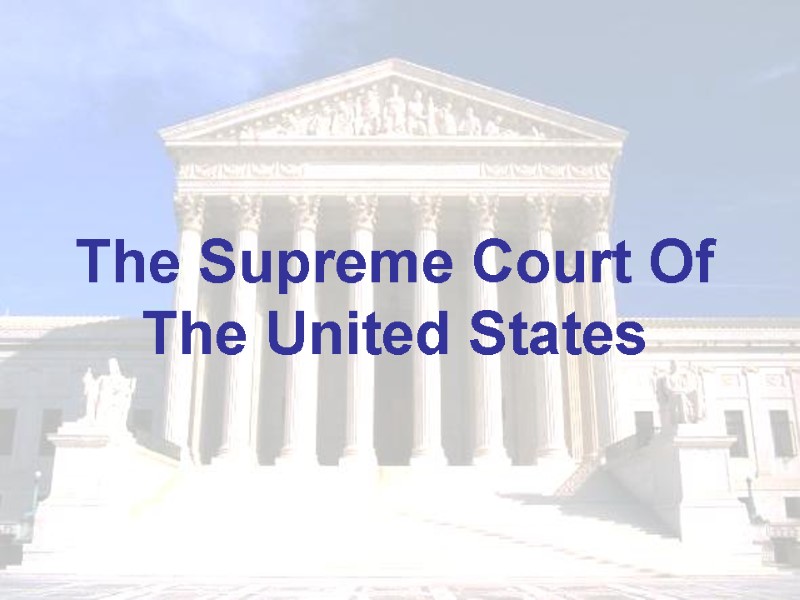 The Supreme Court Of The United States
The Supreme Court Of The United States
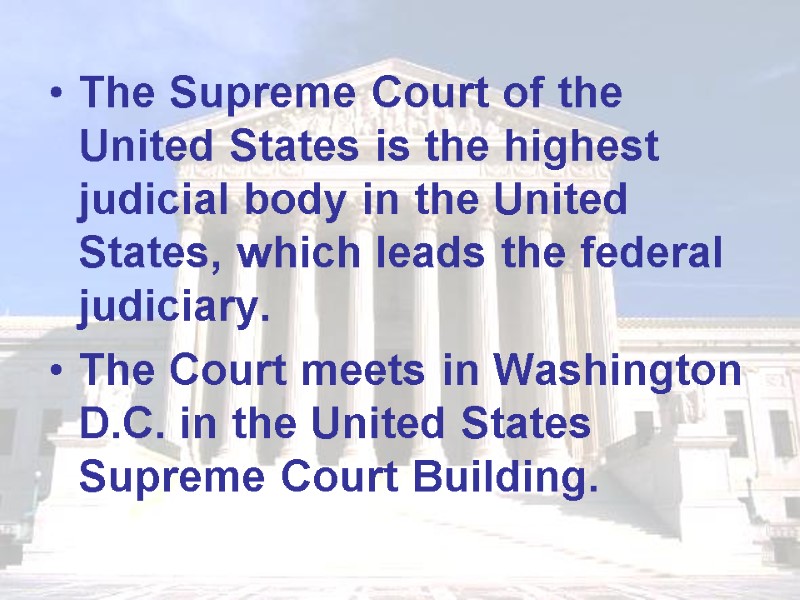 The Supreme Court of the United States is the highest judicial body in the United States, which leads the federal judiciary. The Court meets in Washington D.C. in the United States Supreme Court Building.
The Supreme Court of the United States is the highest judicial body in the United States, which leads the federal judiciary. The Court meets in Washington D.C. in the United States Supreme Court Building.
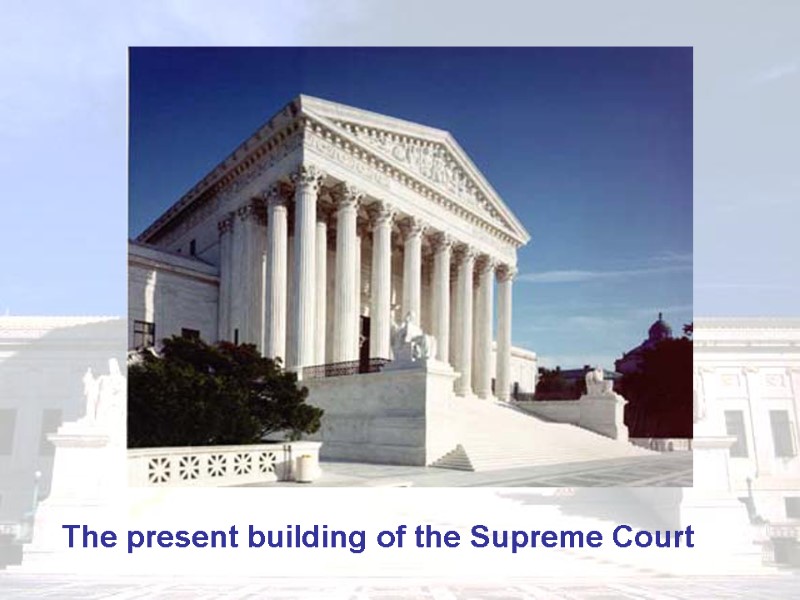 The present building of the Supreme Court
The present building of the Supreme Court
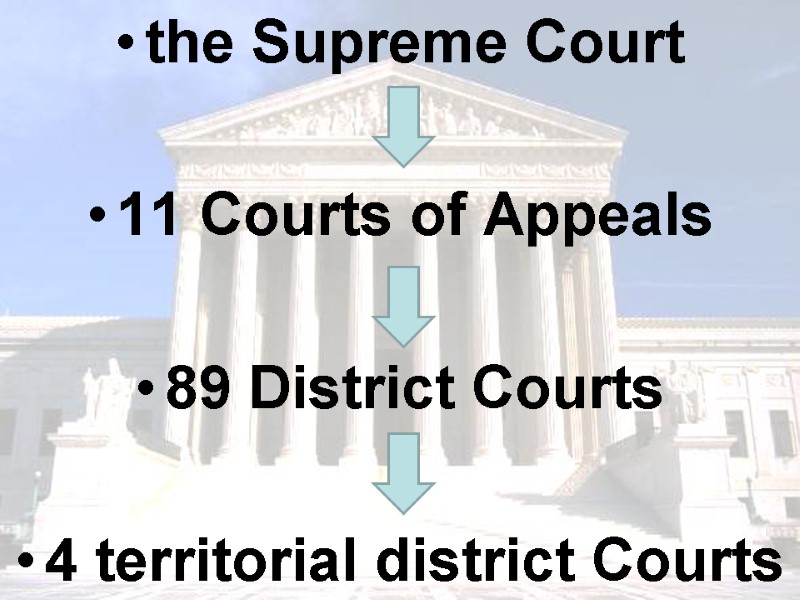 the Supreme Court 11 Courts of Appeals 89 District Courts 4 territorial district Courts
the Supreme Court 11 Courts of Appeals 89 District Courts 4 territorial district Courts
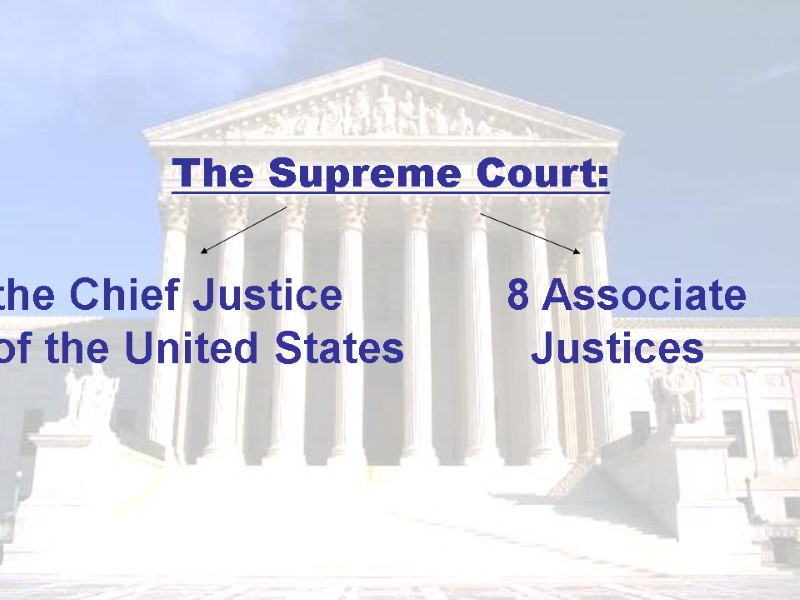 The Supreme Court: the Chief Justice 8 Associate of the United States Justices
The Supreme Court: the Chief Justice 8 Associate of the United States Justices
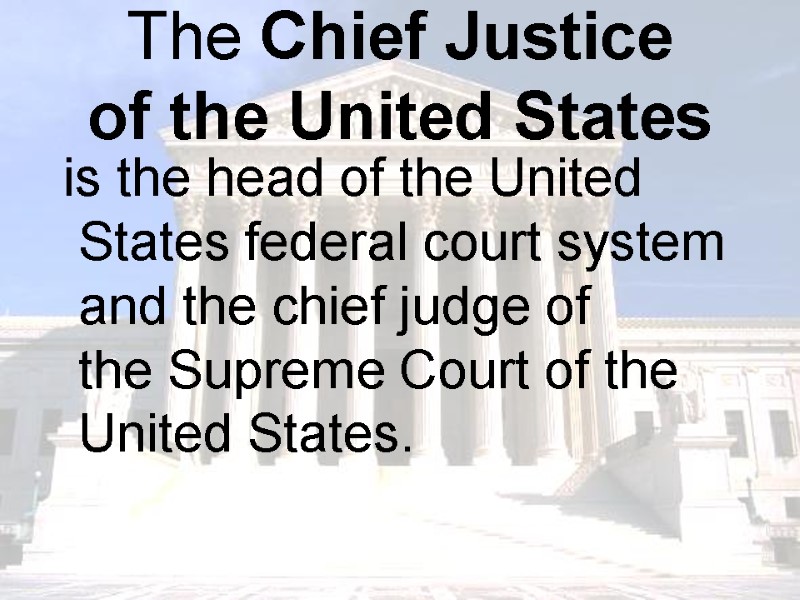 The Chief Justice of the United States is the head of the United States federal court system and the chief judge of the Supreme Court of the United States.
The Chief Justice of the United States is the head of the United States federal court system and the chief judge of the Supreme Court of the United States.
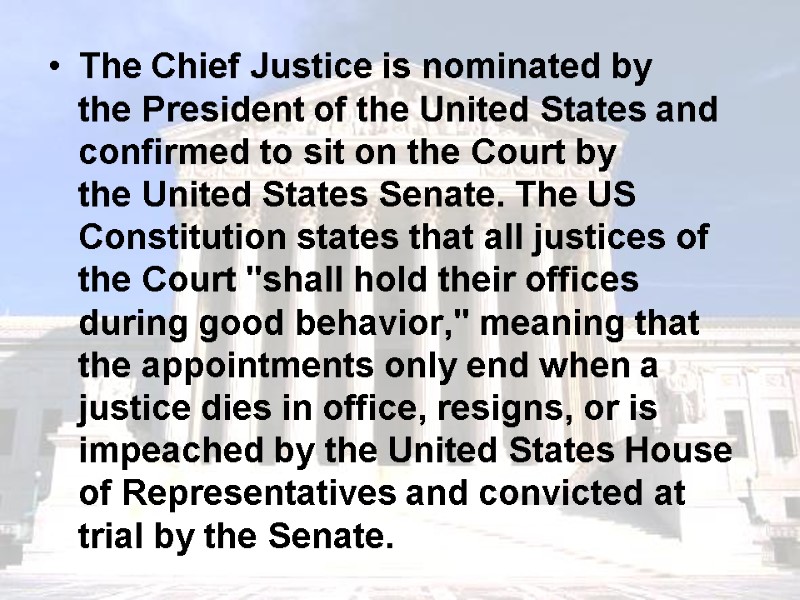 The Chief Justice is nominated by the President of the United States and confirmed to sit on the Court by the United States Senate. The US Constitution states that all justices of the Court "shall hold their offices during good behavior," meaning that the appointments only end when a justice dies in office, resigns, or is impeached by the United States House of Representatives and convicted at trial by the Senate.
The Chief Justice is nominated by the President of the United States and confirmed to sit on the Court by the United States Senate. The US Constitution states that all justices of the Court "shall hold their offices during good behavior," meaning that the appointments only end when a justice dies in office, resigns, or is impeached by the United States House of Representatives and convicted at trial by the Senate.
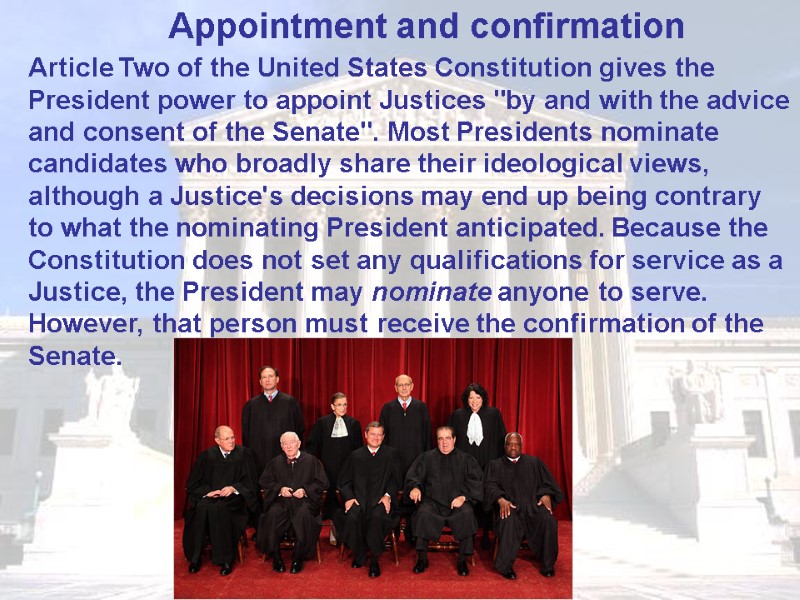 Appointment and confirmation Article Two of the United States Constitution gives the President power to appoint Justices "by and with the advice and consent of the Senate". Most Presidents nominate candidates who broadly share their ideological views, although a Justice's decisions may end up being contrary to what the nominating President anticipated. Because the Constitution does not set any qualifications for service as a Justice, the President may nominate anyone to serve. However, that person must receive the confirmation of the Senate.
Appointment and confirmation Article Two of the United States Constitution gives the President power to appoint Justices "by and with the advice and consent of the Senate". Most Presidents nominate candidates who broadly share their ideological views, although a Justice's decisions may end up being contrary to what the nominating President anticipated. Because the Constitution does not set any qualifications for service as a Justice, the President may nominate anyone to serve. However, that person must receive the confirmation of the Senate.
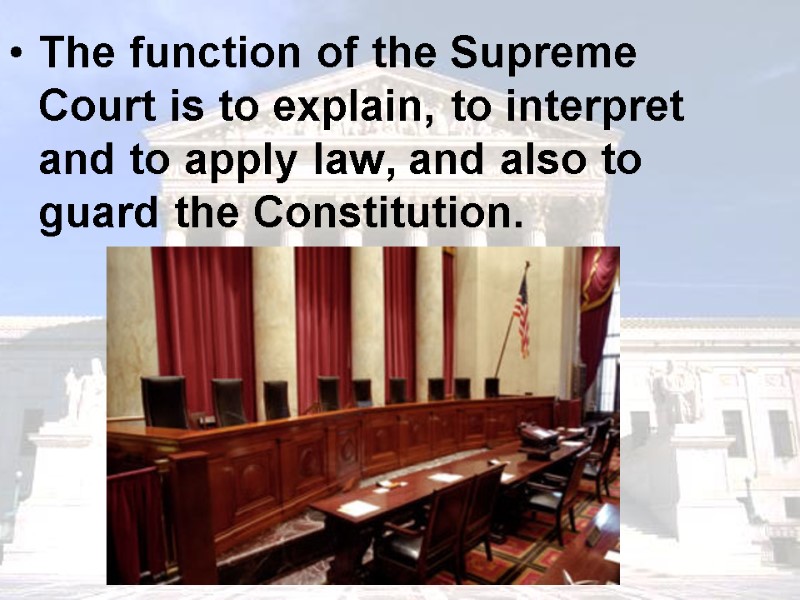 The function of the Supreme Court is to explain, to interpret and to apply law, and also to guard the Constitution.
The function of the Supreme Court is to explain, to interpret and to apply law, and also to guard the Constitution.
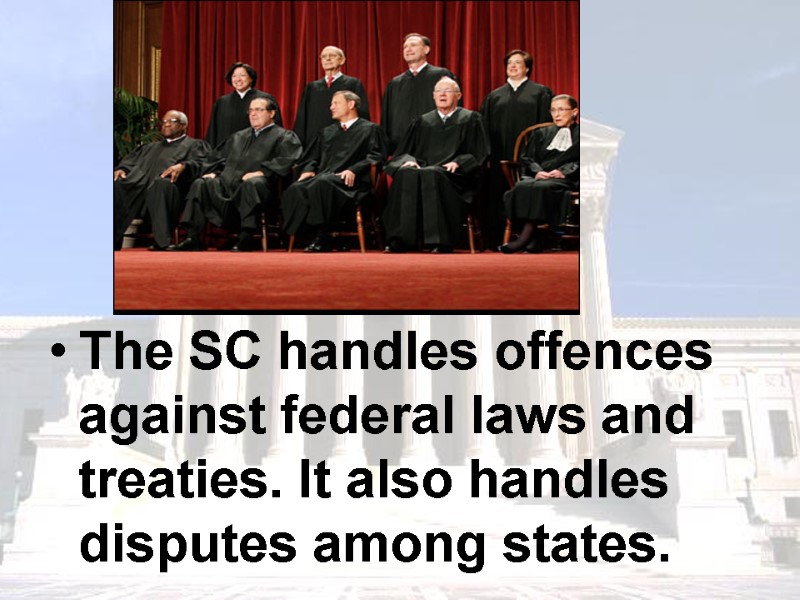 The SC handles offences against federal laws and treaties. It also handles disputes among states.
The SC handles offences against federal laws and treaties. It also handles disputes among states.
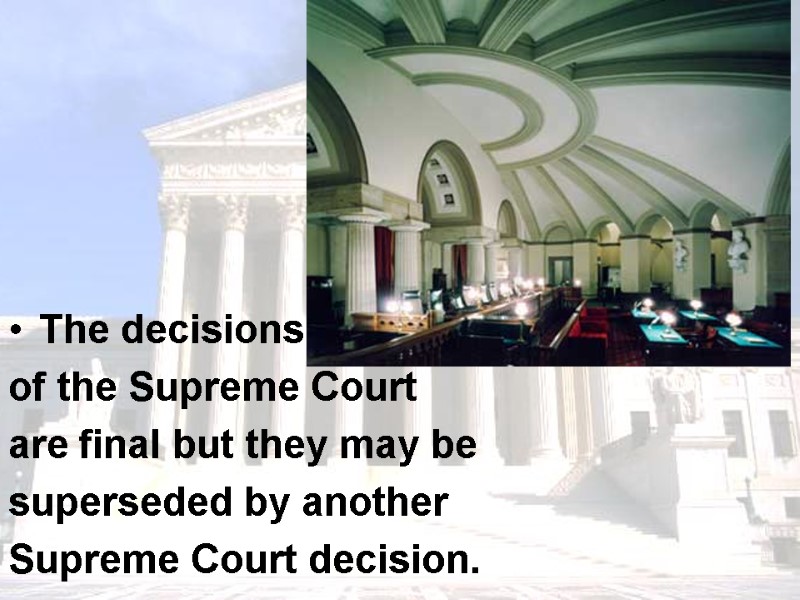 The decisions of the Supreme Court are final but they may be superseded by another Supreme Court decision.
The decisions of the Supreme Court are final but they may be superseded by another Supreme Court decision.
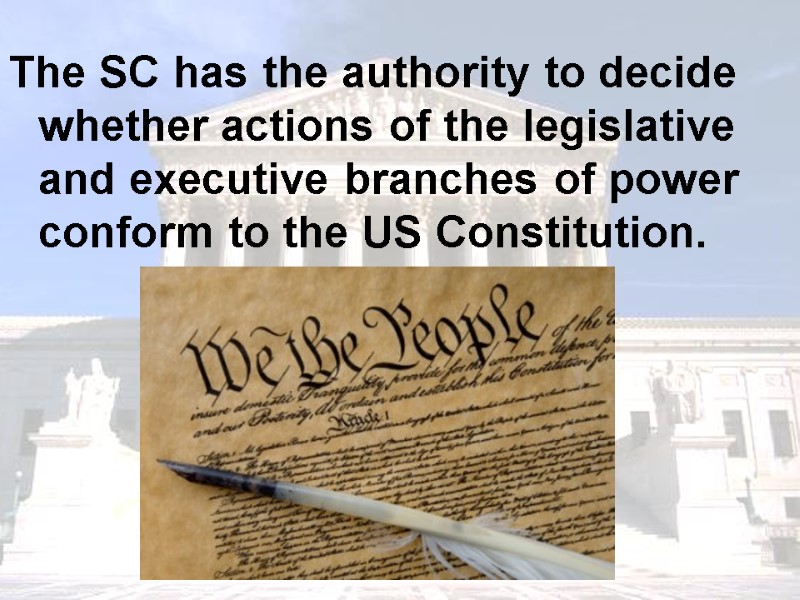 The SC has the authority to decide whether actions of the legislative and executive branches of power conform to the US Constitution.
The SC has the authority to decide whether actions of the legislative and executive branches of power conform to the US Constitution.
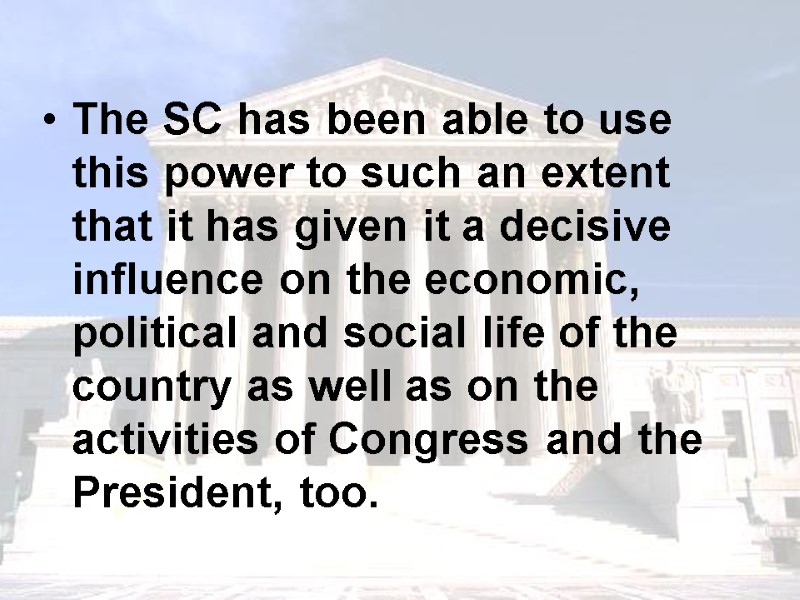 The SC has been able to use this power to such an extent that it has given it a decisive influence on the economic, political and social life of the country as well as on the activities of Congress and the President, too.
The SC has been able to use this power to such an extent that it has given it a decisive influence on the economic, political and social life of the country as well as on the activities of Congress and the President, too.
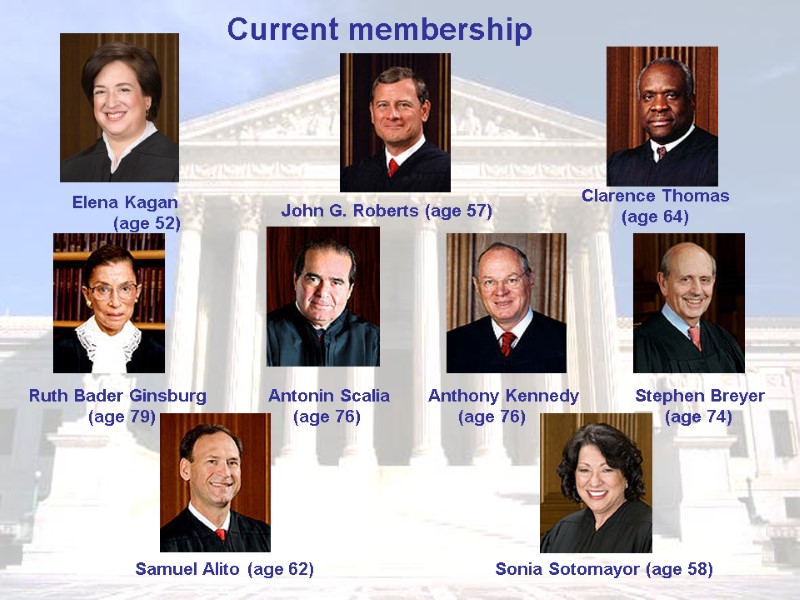 Current membership John G. Roberts (age 57) Elena Kagan (age 52) Antonin Scalia (age 76) Anthony Kennedy (age 76) Clarence Thomas (age 64) Ruth Bader Ginsburg (age 79) Stephen Breyer (age 74) Samuel Alito (age 62) Sonia Sotomayor (age 58)
Current membership John G. Roberts (age 57) Elena Kagan (age 52) Antonin Scalia (age 76) Anthony Kennedy (age 76) Clarence Thomas (age 64) Ruth Bader Ginsburg (age 79) Stephen Breyer (age 74) Samuel Alito (age 62) Sonia Sotomayor (age 58)





























